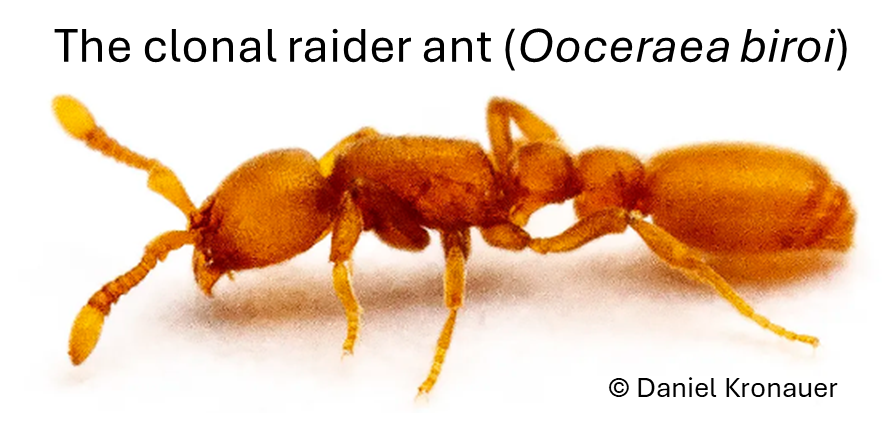April 2025, 11th Scientific talk
Published on 28 February 2025
Seminar's topic
Pheromone communication and nestmate recognition in the clonal raider ant.

Seminar's topic
Social insects, like ants, rely on complex chemical communication to regulate a wide array of social behaviors, including nestmate recognition, division of labor, and coordination of collective actions. Communication in ants primarily occurs through the production and detection of pheromones, volatile chemicals that are produced by exocrine glands and that have different roles in insect societies (e.g. trail following, recruitment, mating, alarm-defense). However, despite the central role of exocrine glands in insect communication, there are still large gaps in our knowledge of their function in any context in ants, and it remains unknown how particular pheromones produced by specific glands initiate distinct social behaviors in social insects.
Additionally, ants use cuticular hydrocarbons (CHCs), lowly volatile chemicals found on the cuticle, to discriminate between nestmates and non-nestmates. Each colony has a unique CHC profile, and profiles vary across colonies of the same species. According to one model, nestmate recognition occurs when an individual’s CHC profile matches a 'template', i.e., a neural representation of the colony odor stored in long-term memory, while mismatches trigger aggression and rejection of the encountered individual. While significant research has focused on understanding the role of CHCs and exocrine glands in social communication, many questions remain about the role of learning and template plasticity in nestmate recognition.
Here, I will present my work using the clonal raider ant Ooceraea biroi, a species that combines the rich social biology of ants with unparalleled experimental amenability to investigate (1) the function of various exocrine glands and the sensory coding of specific pheromones, by creating transgenic ants with genetically ablated glands, thereby disrupting glandular function and pheromone production, and (2) the neural, cognitive, and perceptual mechanisms underlying nestmate recognition. Together, these projects aim to deepen our understanding of the complex mechanisms of chemical communication in social insects, shedding light on how ants discriminate nestmates from non-nestmates, produce pheromones, and coordinate their behavior within the colony.

